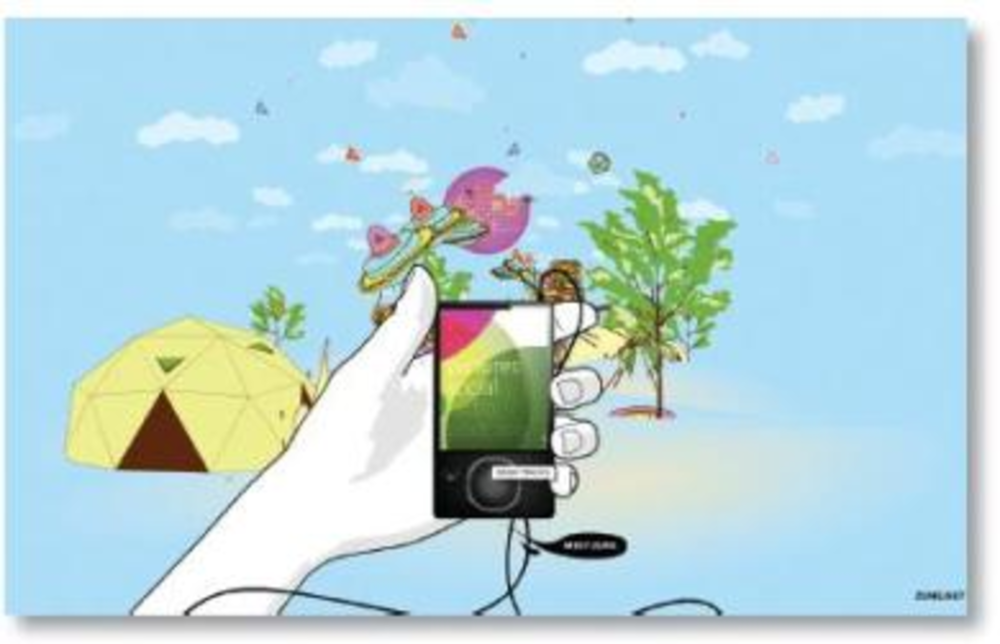Marketing electronics online has become less about technical specs and more about tapping into lifestyles and brand experience, Melanie Shortman Tuazon reports.
When shopping for electronics, consumers usually want to research and test the product and consult online reviews. But as technology becomes more ubiquitous, online direct messaging of consumer electronics is stepping away from stats and technical specifications to focus more on lifestyle and branding.
“It’s good to be technical with a specific crowd,” says Ken Martin, co-founder and chief creative officer of interactive agency Blitz, which has conducted campaigns for Adobe, Microsoft and Cisco. “But now consumer electronics companies have to broaden and have a conversation. [We work to] remove ourselves from the product commodity aspect and tap into the emotional context of how this is improving lives.”
Products like laptops and MP3 players have become useful accessories, symbols of connectivity and agents of identity. Therefore, many direct communications feature a balance between nerd speak and an emotional sell.
“Customers are latching on to things that have a good look and feel to it, and people are definitely responding to the warmer positive associations,” says Brian Dunn, manager of online marketing for Toshiba America Information Systems. “We want to give people a feel for the product and not just its specifications.”
But that doesn’t mean that consumers will blindly buy something because it looks cool or a friend recommended it. Marketing sites need to create an emotional connection as well. “We needed to have product information on the site, obviously,” says Dan LaCivita, SVP and executive director of digital shop Firstborn, which built an animated, artistic site as part of a campaign for Microsoft’s ZuneMP3 player. “If someone comes across the site, they’re going to want to see what the product is about. However, we also wanted to create an emotional experience.”
The Web has the advantage over print of being able to use 3-D techniques to make electronics look realistic and explain features that might not be obvious at first glance. It can also be used to collect information about customers and what they want.
“We try to get as much behavioral information as possible online,” says Ron Park, managing director of database agency Merkle’s quantitative solutions group, who has worked with Dell. “How are people registering and how can you better use browsing behaviors to get interests and needs?”
Other key feedback comes from customer reviews. Popular on retailer sites, some manufacturers now feature customer reviews on marketing sites.
“If there’s an issue with a product, it’s a good way for us to learn from our consumers,” says Dunn. Though manufacturers may not want anything negative on their sites, there can actually be a benefit to such openness, he explains. “When people see negative reviews on our Web site, they don’t reflect on the product, but they have a positive reaction that we’re not trying to hide things,” he says. “I think it’s important to be transparent and let them say things about the products that they would say anyway.”
Single sites are also targeting several different types of consumers with different features. For instance, Toshiba recently launched a site that appeals to both researchers and browsers. “People like to do their research in different ways. I’m someone who likes to put a model number or a keyword into a search bar. [This] is one of those things that lets people explore and have fun with it,” says Dunn. “It’s a good starting point.”
Effective online communications with ever-connected consumer electronics consumers also develop consumer relationships that can affect a brand’s reputation and bottom line.
“The lifetime value of a customer is more than just a single purchase,” says Martin on the benefits of lifestyle branding. “That relationship over time is exponential if you incorporate the value of an evangelist that you’ve created.”
Campaigns
Toshiba
Explore.toshiba.com
Toshiba confronted a cold, technological image with a friendly site, which doubled engagement results by promoting expertise in laptop innovation. The site breaks up the laptop category into sections such as business, education and gaming. It also targets less focused consumers with the Laptop Finder, an interactive feature that allows users to adjust dials according to performance, weight, display size and price.
Microsoft
ZuneJourney.net
Digital shop Firstborn animated the work of six artists to simulate the emotional and practical experience of using the Zune player’s six menu settings. Users hold down a mouse button to hear music and see the animations while a hand at the bottom of the screen holds an interactive Zune. Clicking on the player brings consumers to a product information site that explains anddemonstrates features. Success included a Webby Award in the consumer electronic category.
Cisco
WhereLifeConnects.com
Cisco’s Linksys brand of wireless Internet routers gets a personal identity with a lightly branded site created by interactive agency Blitz as a lifestyle offshoot for connected users. Consumers can read about product experiences in articles, watch video and participate in polls. A segmented opt-in e-mail campaign has roughly one million subscribers and customer feedback has led to new product features.







